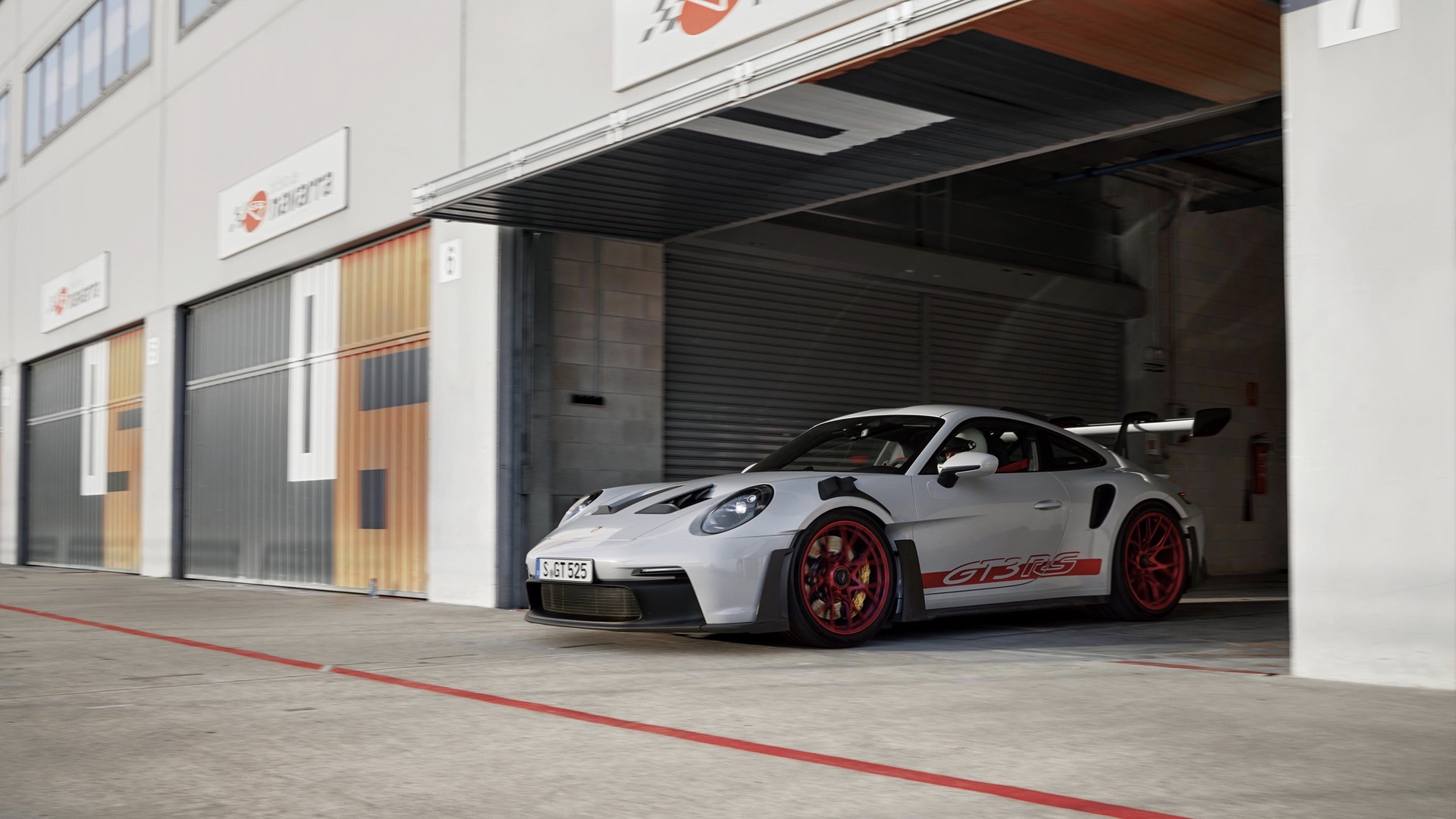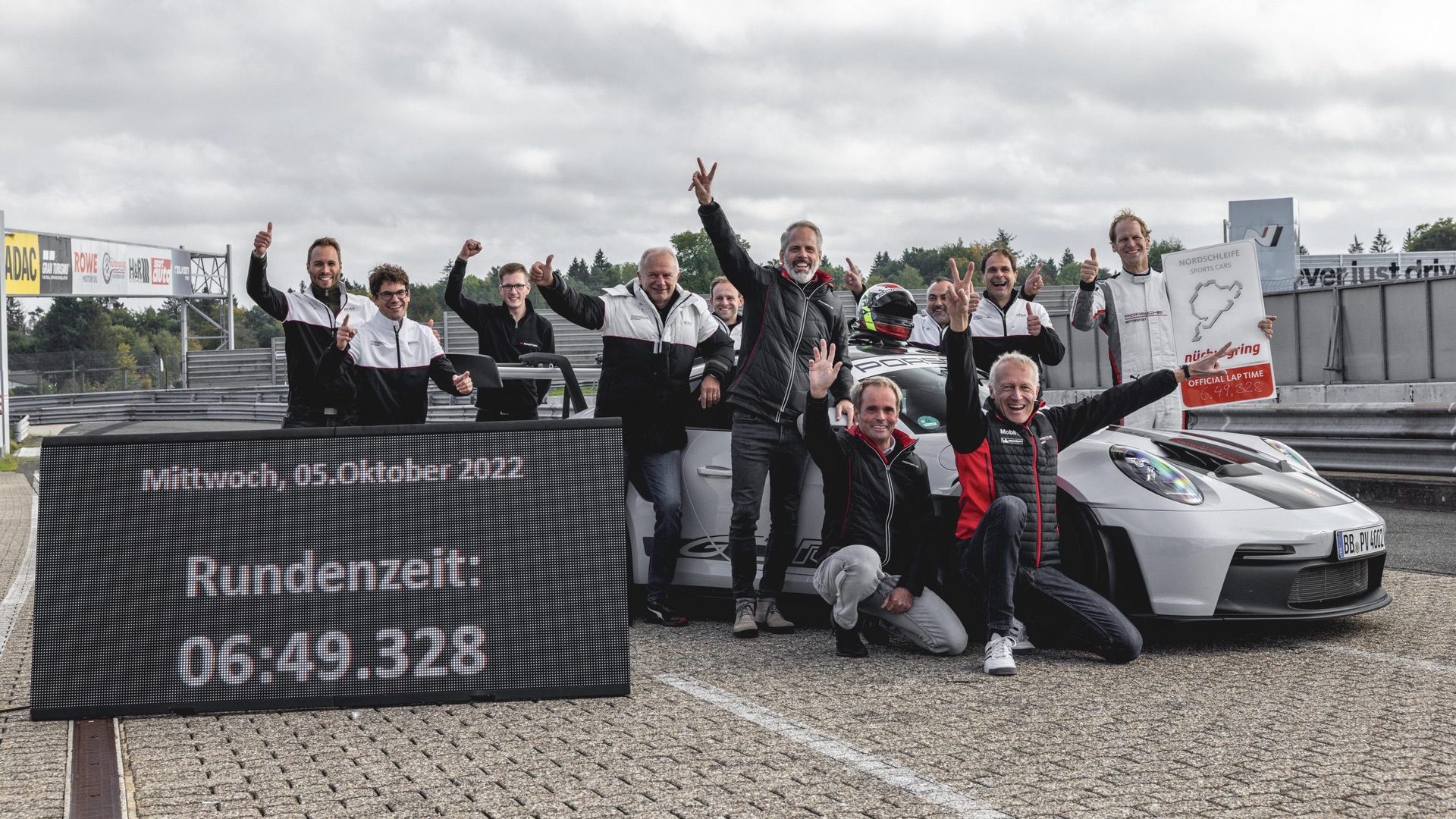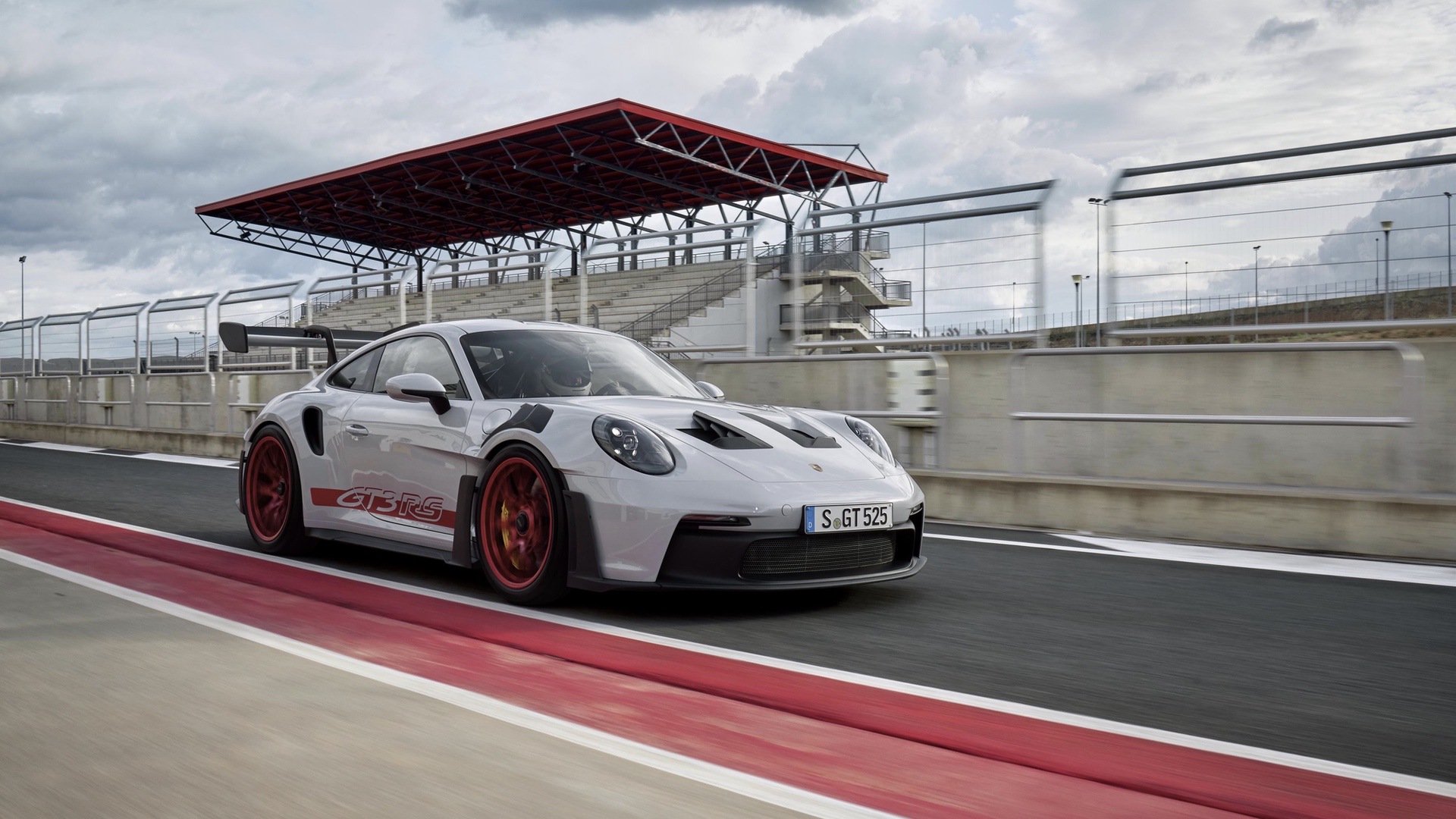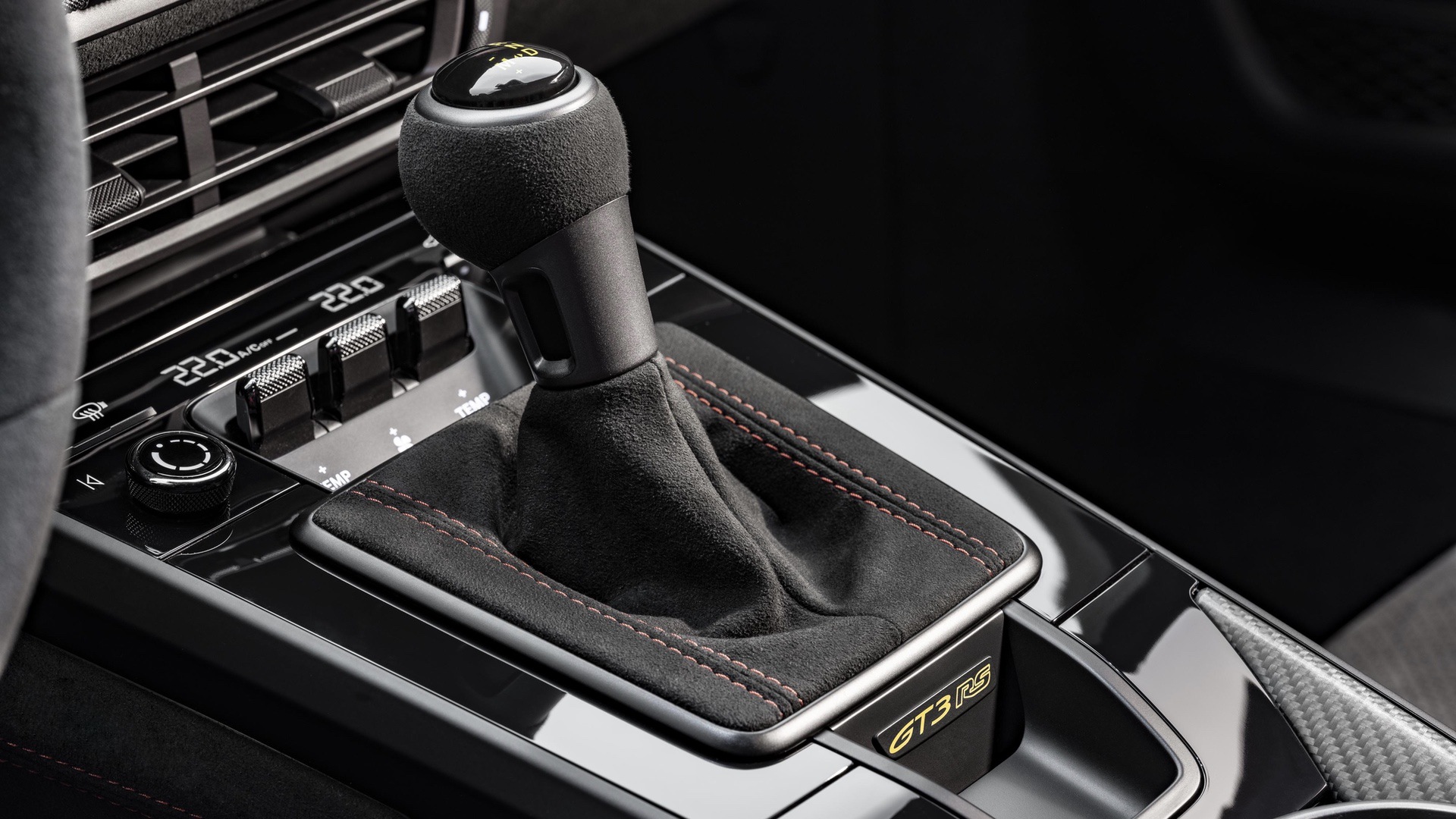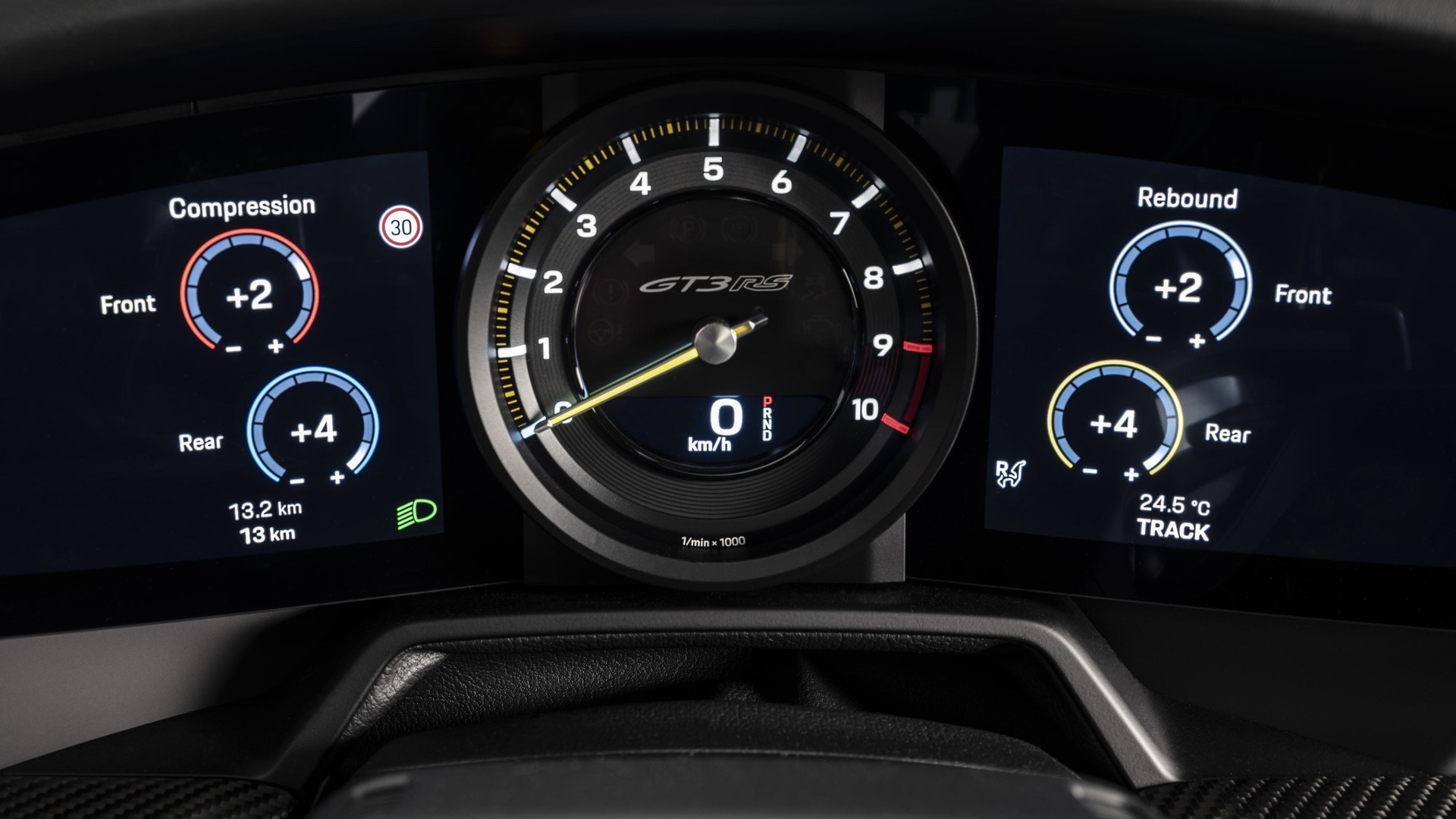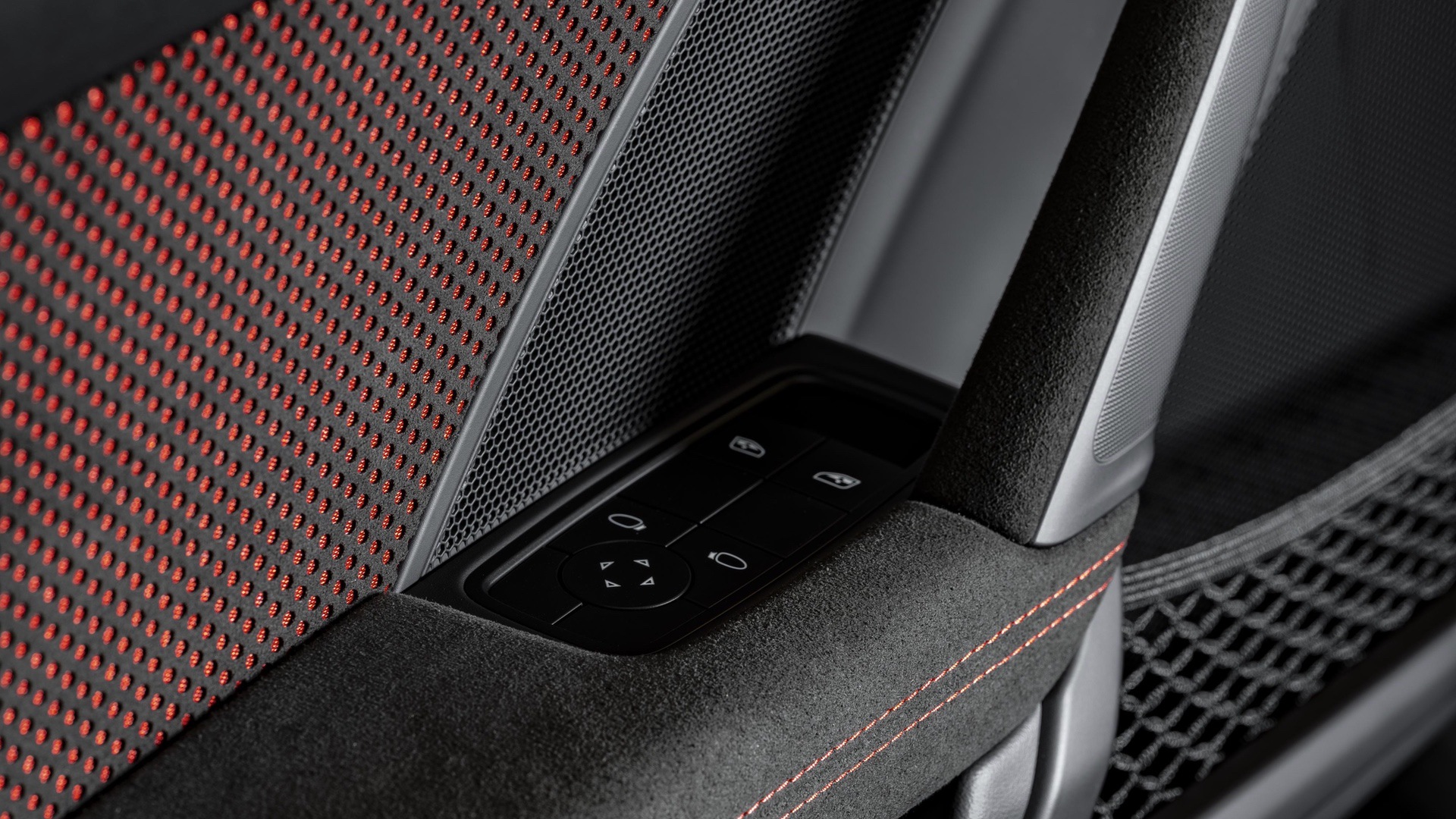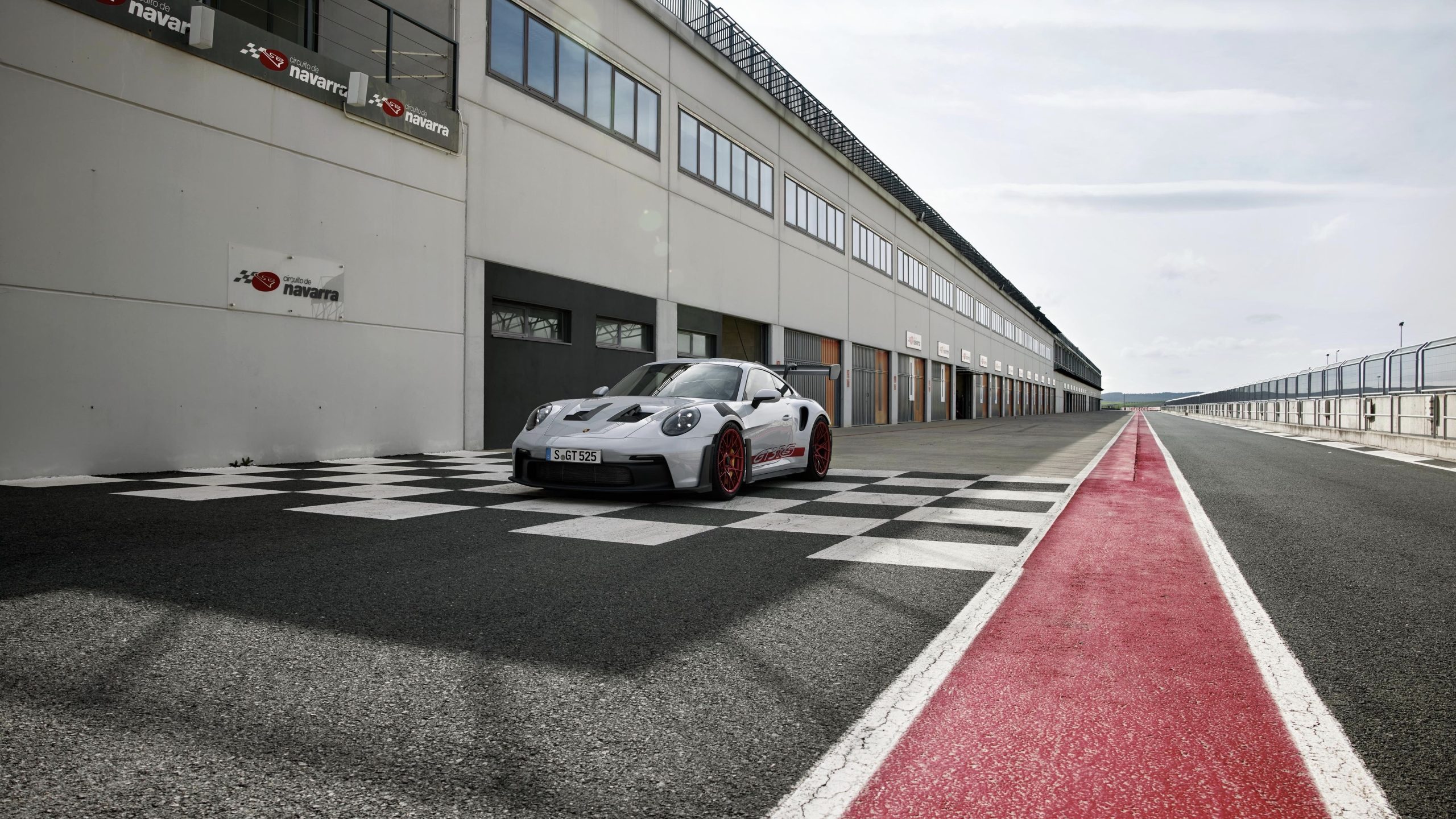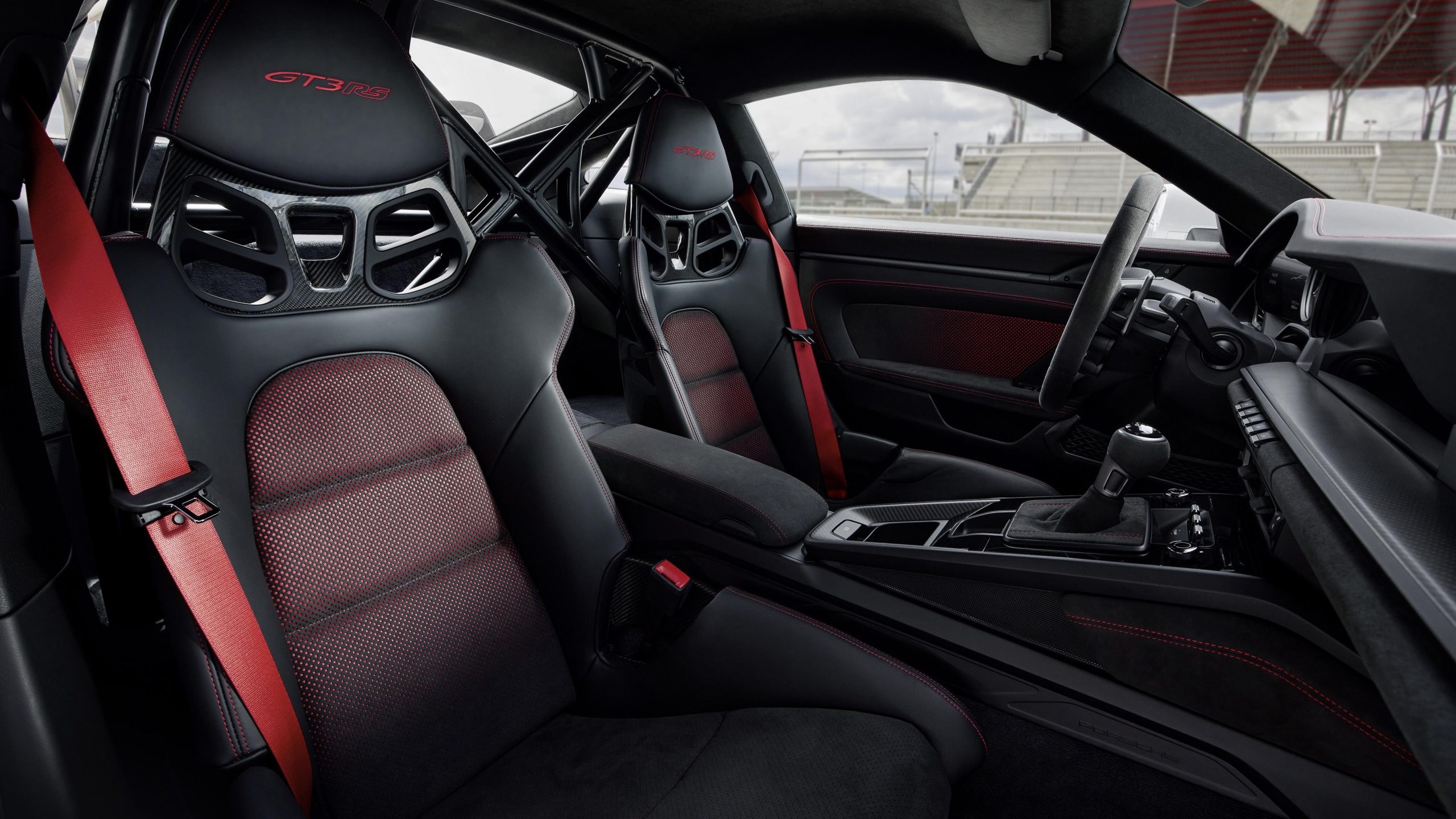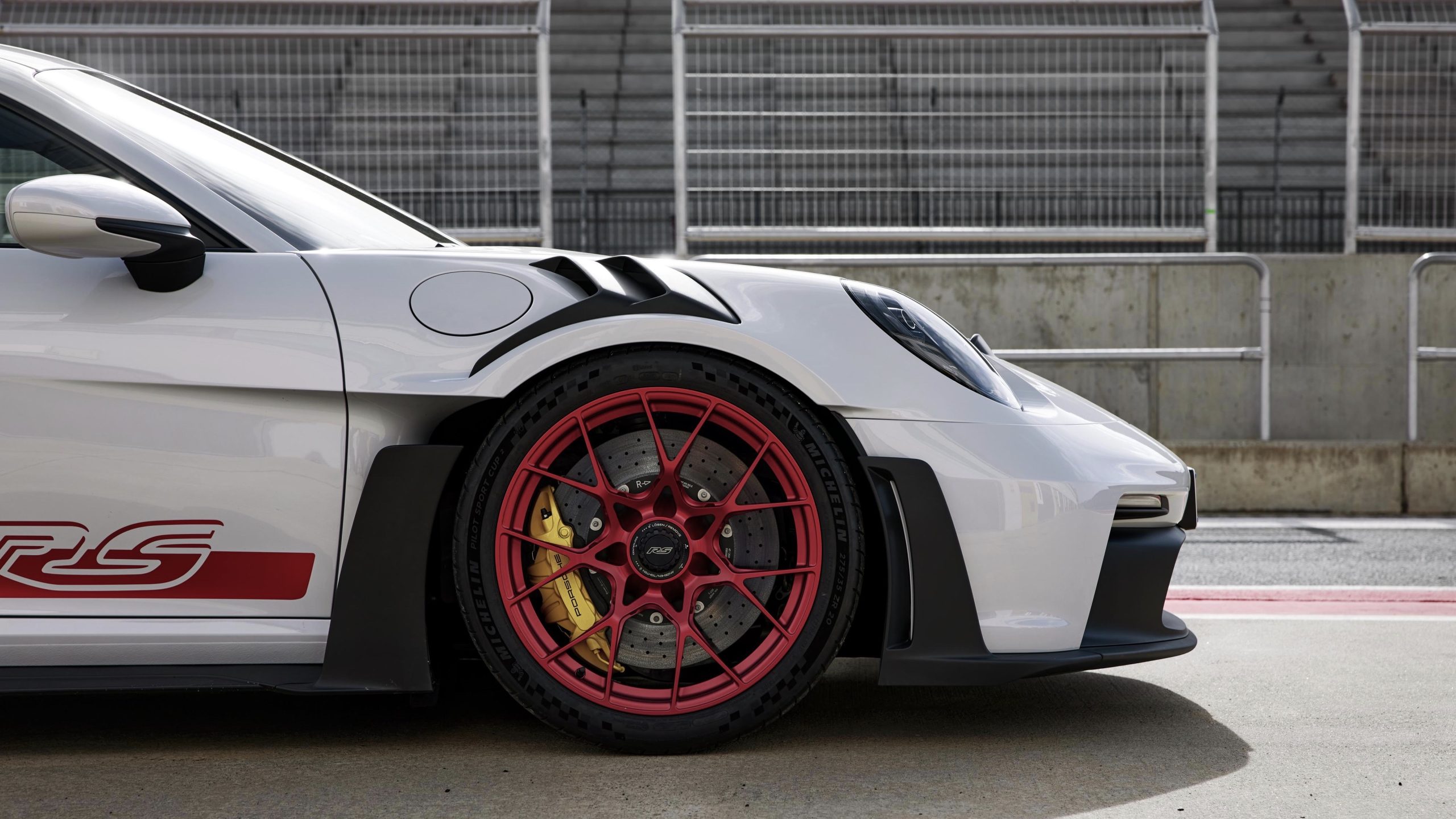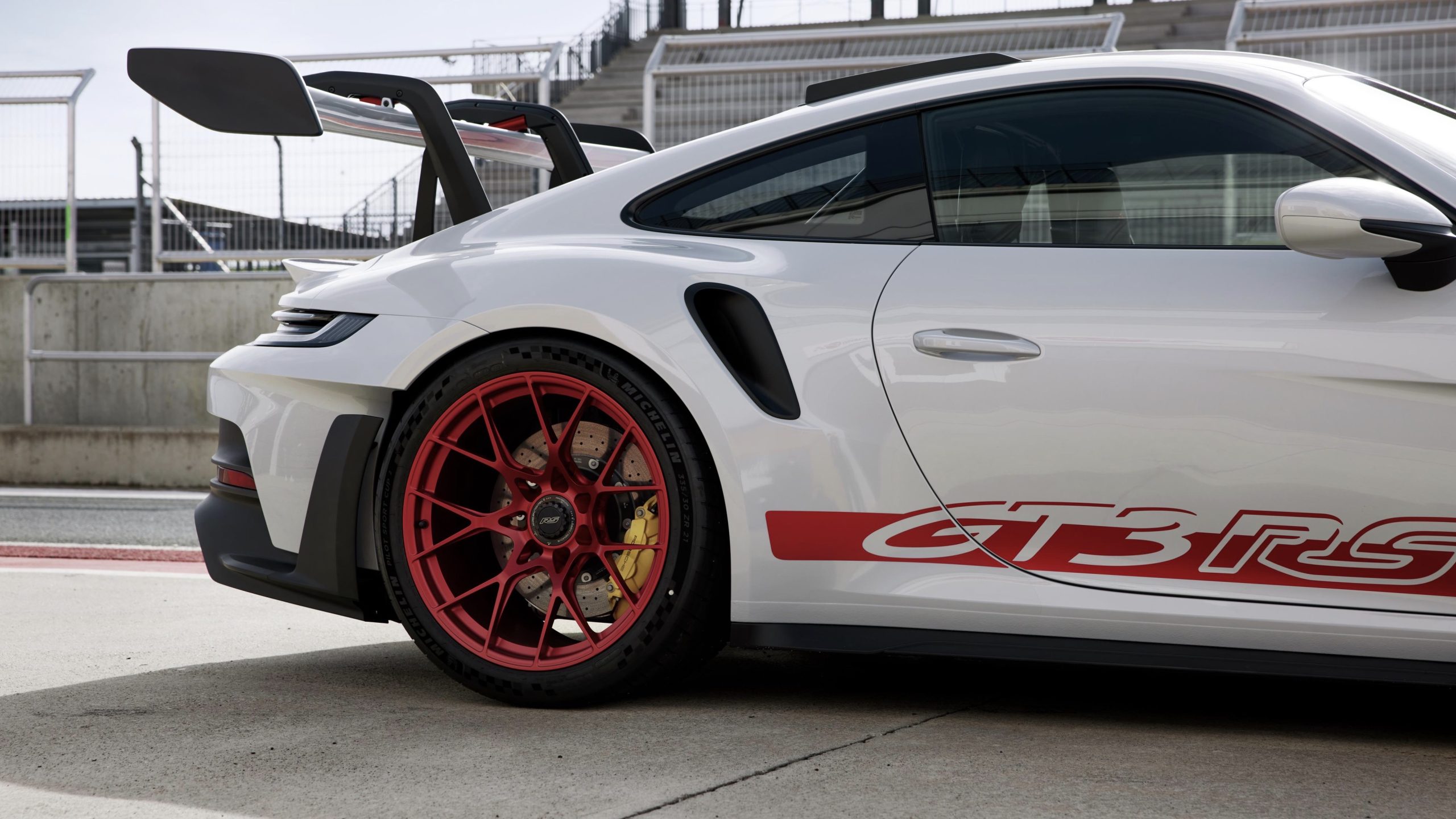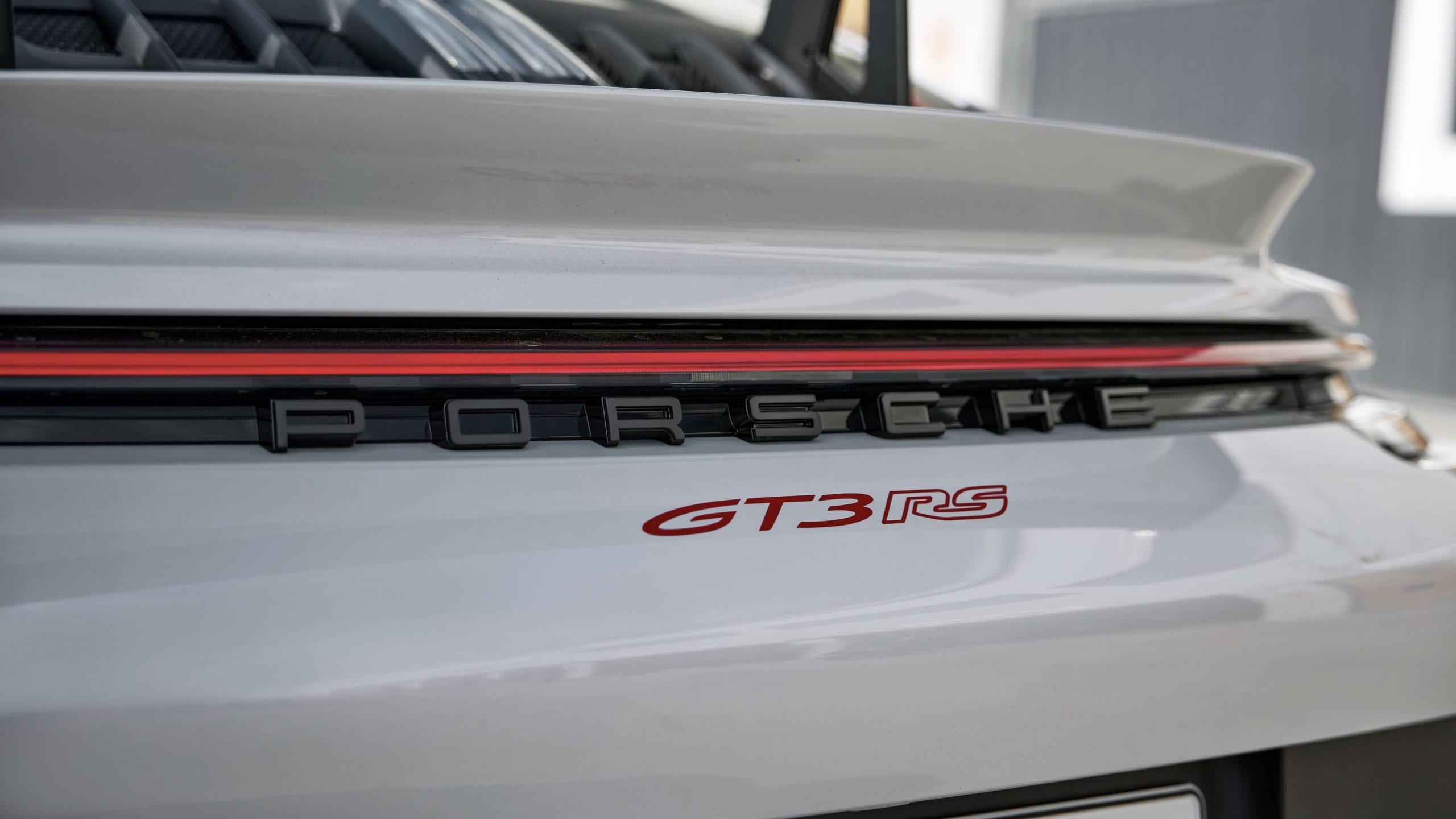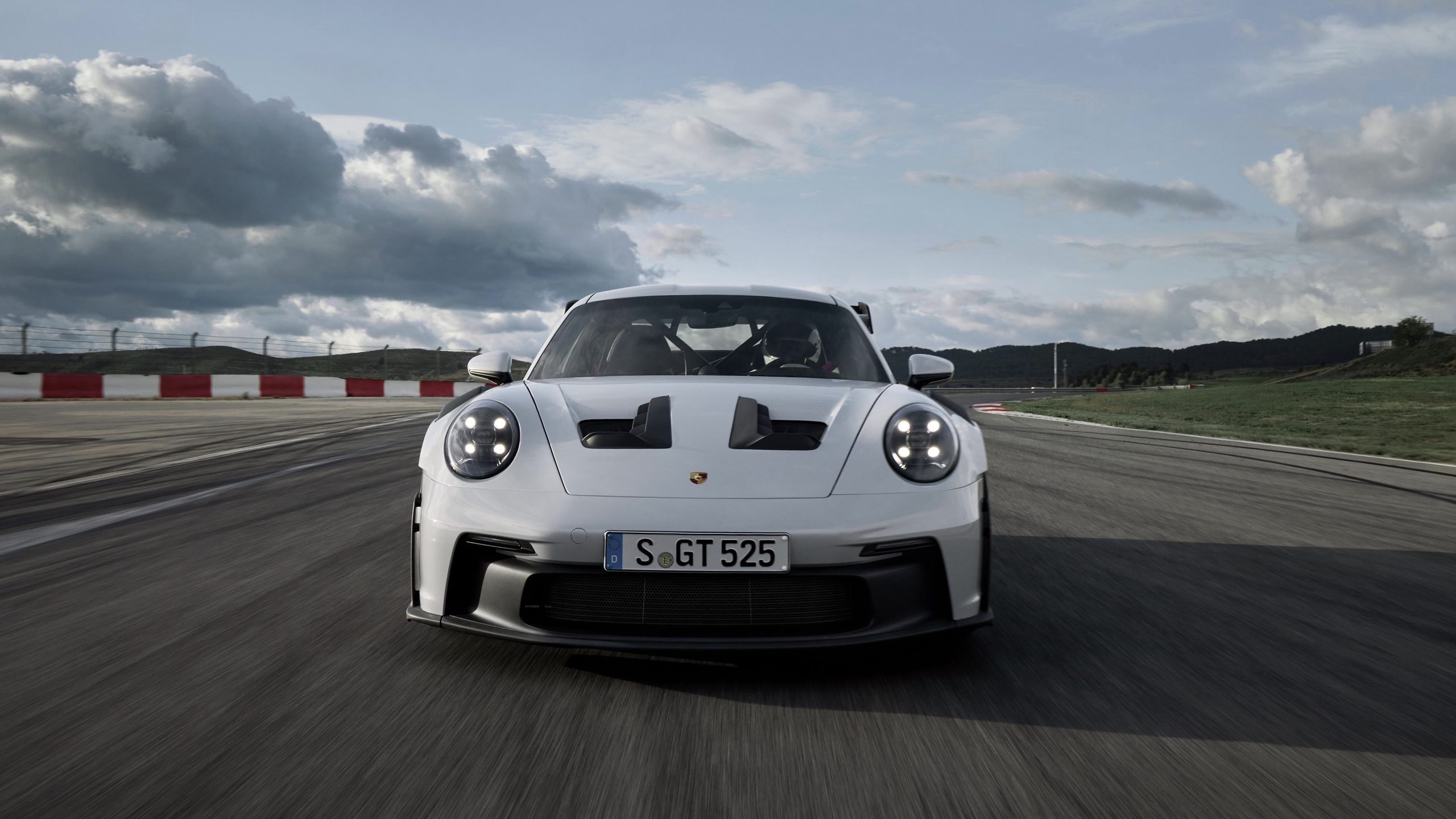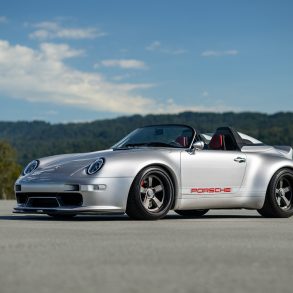Porsche 911 GT3 RS (992) – Reviews, Pricing, Specs & Buyers Guide
When Porsche set out to re-imagine the latest iteration of the GT3, they did so with the thoughtfulness, conviction, and panache necessary to create the most exceptional Porsche 911 GT3 to date.
You’d have expected no less from the remarkably dynamic duo of Dr. Frank Walliser and “Mr. GT” Andreas Preuninger, who’ve spearheaded some sensational improvements to Porsche’s most quintessential models.
As a Stuttcars reader, you’ll likely need no introduction to the hierarchy and convention of Porsche’s 911 GT3 formula—after the GT3, you already knew that a new GT3 RS was on its way, and surely, that it was going to be every bit as revolutionary as the car which customarily precedes it.
The latter has since been unveiled and has just started to make its first impressions on the world, with automotive journalists getting the proverbial first crack at it. The reviews have been raved all around, but this is something that’s become par for the course at Stuttgart nowadays.
Getting your hands on a brand new GT3 RS as a consumer though, could prove trickier than it ever has been before, with an unprecedented global political climate and the resulting automotive economy, playing a starring role.
Track Results Speak for Themselves
At first glance, the silhouette of the new Porsche 911 GT3 RS cuts an aggressive figure—easily, the most extroverted production car to come from the automaker to date. It looks absolutely incredible.
Yet despite taking maximum style points, the new GT3 RS is even more about substance. “There’s nothing fake, nothing exaggerated”, said Preuninger. Every minute detail about the car has been painstakingly undertaken with the utmost consideration of maximum performance.
In keeping with tradition, the car has also set a lap time at the Nürburgring Nordschleife, in the process (you guessed it) becoming the fastest Porsche 911 GT3 RS ever, and the quickest naturally-aspirated production car around the ‘Ring.
6:49.328—in case you were wondering.
6:44.848—if you know, you know.
More of Everything & Nothing We Don’t Need
Porsche had already made it clear in the lead up to its release, that their most track-focused 911 would also be the most advanced GT3 RS to date. This is hardly unexpected information in and of itself, though the company did hint on the specifics for how it would live up to this claim.
The most significant improvements made to the RS—over both the 992 GT3 and the previous-gen 991 GT3 RS—were applied to the aerodynamics and chassis departments of the car.
However, up to the unveiling date, they had been coy on providing specifics for power figures, with Andreas Preuninger, Director GT Model Line originally stating:
“The new 911 GT3 RS is even more optimized for track use than its predecessors. The spontaneously responsive, high-revving four-litre, six-cylinder boxer engine with approximately 500 PS has proven ideal for use at track days and club sport events. That’s why we focused primarily on aerodynamics and chassis questions in the development of the new 911 GT3 RS.”
Shortly after, Porsche teased us with the introduction of its new Porsche 911 GT3 R customer race car, which many viewed as a precursor for the soon-to-follow GT3 RS road car we know today.
This fueled rumors that the new 2023 Porsche 911 GT3 RS would come equipped with a derivative of the 4.2L engine found in the competition-only version.
In doing so, it would follow the 991-gen’s playbook, where its first GT3 RS benefitted from an upgraded 3.8L unit-found in the 991.1 GT3—which then became a 4.0L.
We can now conclude that Preuninger stuck to his guns, with the company not straying from his original message—and that Porsche have indeed stuck with the tried-tested-and-true formula, that is the 4.0L flat-6 unit. It’ll still get the customary power bump over the 992 GT3.
Engine & Drivetrain
More on that engine. Well, there actually isn’t that much more to say, as other elements of the car dominated the script. But what there is to mention, is just as important.
The revised 4.0L naturally-aspirated flat-6 engine outputs 525 PS, which is 20 PS more than the latest GT3. Much like the displacement factor, the consensus was that we’d see an even more powerful engine than that—but those who know, know that peak numbers mean very little these days anyway.
Preuninger stated that the new GT3 RS “Makes more power at higher rpms” and that it “Has a better lubrication system to handle high g-force situations”. Additionally, the 7-Speed PDK which has become synonymous with RS-level performance, shifts faster and is “…easier to operate than ever“.
It’s everything you need to give you the biggest edge in pursuit of the best lap times, while offering unmatched durability.
2023 Porsche 911 GT3 RS Chassis
“Basically, a race car driver’s dream come true….” – Jörg Bergmeister, Porsche test driver
It really is, Jörg, it really is. Such sentiments wouldn’t be possible if the new Porsche 911 GT3 RS wasn’t the embodiment of a race car, either. The two—race car drivers and race cars—go together, like peanut butter and jelly.
It’s a dream come true for the rest of us, too—or at least those of us who have an appetite for performance in general. This car: it oozes it from every fiber of its being.
This starts with how easily customizable the driving experience is. An adjustable differential (PTV+) helps to dial out unwanted oversteer or account for tire degradation—extremely useful for excursions at the racetrack.
There are 7 traction control settings, and the system can be switched off completely as well. Of course, being able to change suspension settings on-the-fly is still a cornerstone for the RS. All this can be toggled with steering-wheel-mounted knobs—just like (you guessed it) a race car.
The suspension plays a huge role in all this too, with Preuninger remarking that the car’s “anti-dive” geometry helps to ensure a more balanced load under braking. Naturally, the 992 GT3 RS carries over the double wishbone front suspension seen in the 992 GT3, where it was introduced for the first time in a Porsche 911 road car.
In unison, the aerodynamic and chassis features on the new GT3 RS allow for a perfect balance and setup for any racetrack and with any tire.
Aerodynamics
“I hope customers will use it on the racetrack.” – Andreas Preuninger
The new Porsche 911 GT3 RS underwent 1,500 simulations in a wind tunnel and can generate up to 3 times the downforce of 992 GT3 and twice that of the 991.2 GT3 RS. As impressive as that is, peak numbers once again only tell part of the story.
It gets better—a lot better. There are rotating flaps under the front bumper in addition to strakes, which help to maximize downforce and stability under load. The rear wing is fully active and infinitely adjustable, and even features DRS (drag reduction system) to minimize drag in situations where less downforce is required (like on a long straightaway).
Air-flow is also channeled more efficiently than ever, with aggressive hood vents, revised fender vents and beveled door panels playing their part to optimize cooling and aerodynamics. Roof fins are something completely new and form part of that equation as well. In total, 860 kg of downforce is generated at 285 km/h.
An available Weissach Package has returned for the 992, which doles out a generous serving of carbon fiber accessories including the front lip, an unpainted roof, interior accents, certain suspension components and even a roll cage. In all, this shaves off around 5 kg of weight, while giving the car that quintessential Weissach “exposed-CF” appearance.
Interior & Design Elements
As weight reduction is a big part of the overall philosophy, there’s carbon fiber just about everywhere you’d expect—and in true brand-spanking-new-RS-fashion, in some places you might not. For the first time, the doors are made entirely CFRP, as are some suspension bits as mentioned earlier.
There’s also lightweight carpentry and an extensive use of microfiber upholstery to highlight the car’s driver-centric form and functionality as a track weapon. Not too many changes in the general cabin aesthetic otherwise, with a digi-analog hybrid display continuing to serve as the instrument cluster.
For me, the steering wheel really steals the show here, with the mounted knobs allowing for the manipulation of the car’s driving character in any given moment, right at the driver’s fingertips.
Pricing & Availability
The 2023 Porsche 911 GT3 RS has a base MSRP of $225,250 USD.
As with practically any Porsche car, you should expect to add another 10%-15% on top of that to budget for some of the more popular options and add-ons.
The Weissach Package on its own costs $33,520 USD.
Now more than ever, getting a build slot or allocation will be difficult due to the current economic conditions. So, expect to wait longer than usual, or pay a premium to get yours sooner—if at all possible.
Either way, it’s best that you get in touch with your local Porsche dealership a.s.a.p. to discuss.
Reviews & Impressions
Publications
Top Gear: 5/5
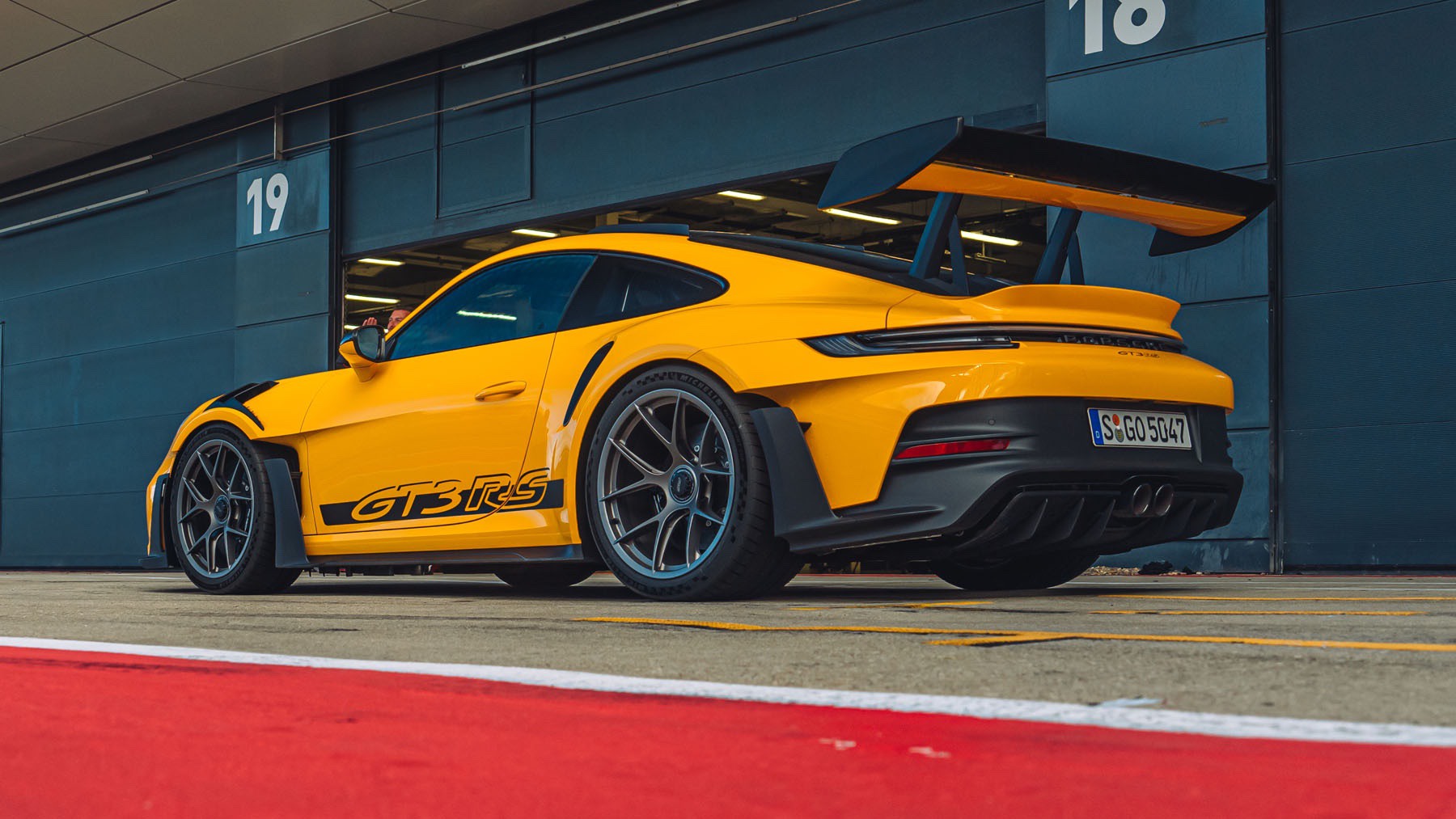
“We salute Porsche choosing to max out on other areas of the 911’s repertoire over power.”
EVO: 5/5

“A technological masterpiece that puts the driver at its very core, the new 911 GT3 RS is everything you expected and so much more.”
Car Magazine: 5/5
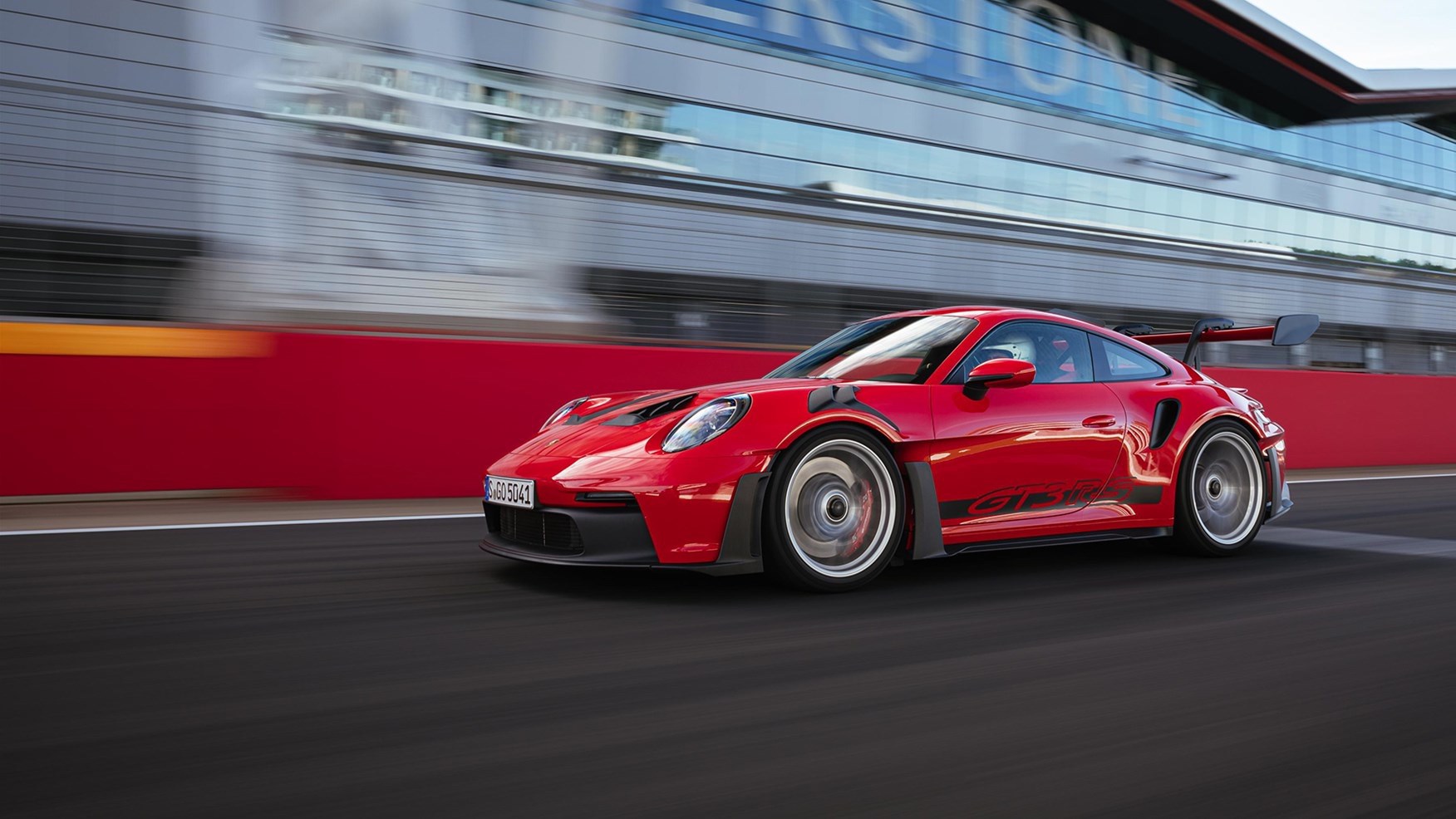
“The technology and content feels more in line with a car costing a quarter of a million pounds or more.”
PistonHeads: 4.5/5

“It’s quicker than a racing car on slicks’ – just one of the many reasons why the new GT3 RS is staggering…”
Car and Driver: 10/10
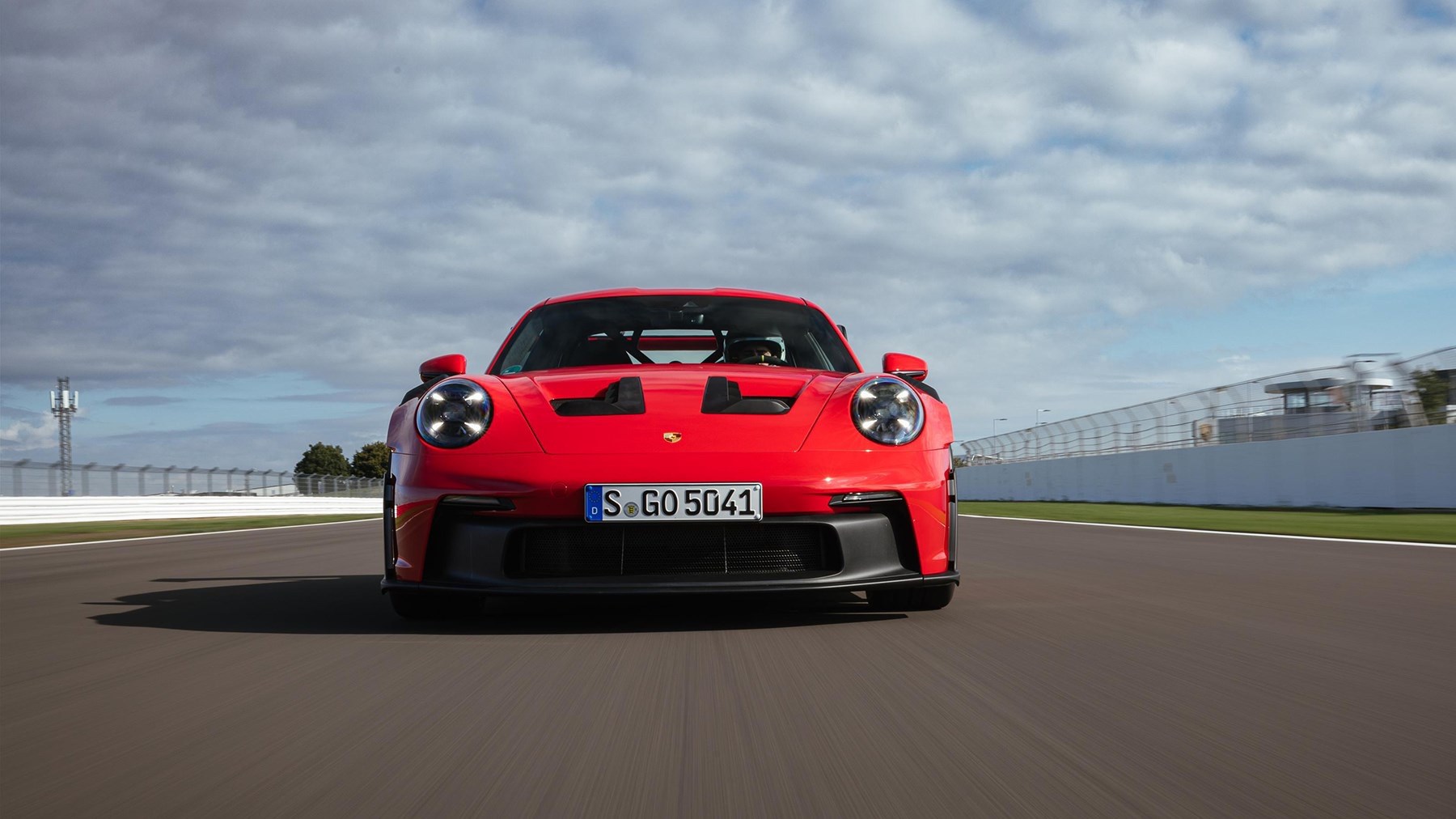
“The 911 GT3 models are Porsche’s gift to car enthusiasts, special and rare automobiles that make driving—slowly or quickly, on the road or on the race track—a soul-stirring experience.”
Video Reviews
We found the following video reviews of the 2023 Porsche 911 GT3 RS:
Official Images & Videos
Porsche 911 GT3 RS (992) Image Gallery
Official Videos
Official Press Release
Porsche Presents the New 911 GT3 RS
17/08/2022
The new Porsche 911 GT3 RS makes no secret of its intentions: it is uncompromisingly designed for maximum performance.
A Road-Legal High-Performance Sports Car Taking Advantage of Motorsport Technology and Concepts
(911 GT3 RS: Fuel consumption* combined (WLTP) 13.4 l/100 km, CO₂ emissions* combined (WLTP) 305 g/km, Fuel consumption* combined (NEDC) 12.7 l/100 km, CO₂ emissions* combined (NEDC) 289 g/km). Even beyond the high-revving naturally aspirated engine with racing DNA and intelligent lightweight construction, it is, above all, the cooling and aerodynamic systems of the 911 GT3 RS that connect it most directly with its motorsport brother, the 911 GT3 R.
Central-Radiator Concept Inspired by Motorsport: The Foundation for Active Aerodynamics
The basis for a significant performance boost is the concept of a central radiator—an idea that was first used in the Le Mans class-winning 911 RSR and subsequently in the 911 GT3 R. Instead of the three-radiator layout seen in previous cars, the new 911 GT3 RS relies on a large, angled center radiator in the car’s nose, positioned where the luggage compartment is located on other 911 models. This has made it possible to use the space freed up on the sides to integrate active aerodynamic elements.
Continuously adjustable wing elements in the front and on the two-part rear wing, in combination with a number of other aerodynamic measures, provide 409 kg of total downforce at 200 km/h. This means that the new 911 GT3 RS generates twice as much downforce as its 991.2-generation predecessor and three times as much as a current 911 GT3. At 285 km/h, total downforce is 860 kg.
A drag reduction system (DRS) is fitted in a production Porsche for the first time. To achieve low drag and higher speeds on straight sections of the track, the DRS allows the wings to be flattened out at the push of a button, within a specific operating range. The airbrake function is activated during emergency braking at high speeds: the wing elements at the front and rear are set to maximum, creating an aerodynamic deceleration effect that significantly supports the wheel brakes.
The look of the new 911 GT3 RS is characterized by the large number of functional aerodynamic elements. The most prominent feature of the GT sports car is the swan-neck-supported rear wing, which is significantly larger in all dimensions. The rear wing consists of a fixed main wing and an upper, hydraulically adjustable wing element.
For the first time on a Porsche production vehicle, the upper edge of the rear wing is higher than the car’s roof. In addition, the front end of the 911 GT3 RS no longer has a front spoiler, but instead features a front splitter that divides the air flowing over and underneath. Side Blades accurately direct air outwards. Front wheel arch ventilation is provided via louvered openings in the front wings.
Inlets behind the front wheels, in the style of the iconic Le Mans-winning 911 GT1, reduce the dynamic pressure in the wheel arches. Side Blades behind the intake ensure that the air is directed to the side of the vehicle. Air from the centrally positioned radiator flows out via large nostrils on the front lid. Fins on the roof direct the air outwards, ensuring cooler intake temperatures in the rear.
In the new 911 GT3 RS, the openings in the rear side panel are used exclusively to improve aerodynamics and not to draw in process air. The rear wheel arch also features an intake and a sideblade for optimized airflow. The rear diffuser comes from the 911 GT3 and has been slightly adapted.
Track Suspension that Can Be Adjusted from the Cockpit
Even the suspension comes in for aerodynamic attention. Because the wheel arches of the new 911 GT3 RS are subject to powerful airflows, the components of the double-wishbone front axle are designed with teardrop-shaped profiles. These aerodynamically efficient links increase downforce on the front axle by around 40 kg at top speed and are otherwise only used in high-end motorsport applications. Because of the wider track (29 millimeters wider than the 911 GT3), the double-wishbone front axle links are also correspondingly longer.
To ensure that the downforce balance between the front and rear axles is maintained even when braking from high speeds, the suspension engineers have significantly reduced pitching under braking. On the new 911 GT3 RS, the front ball joint of the lower trailing arm has been set lower on the front axle. The multi-link rear axle has also been adjusted, with modified spring rates. The driver assistance systems and rear-axle steering also have an even more dynamic set-up here.
The 911 GT3 RS offers three driving modes: Normal, Sport and Track. In Track mode, the basic settings can be individually adjusted. Among other settings, the rebound and compression damping of the front and rear axles can be adjusted separately and in several stages. The rear differential can also be adjusted via rotary controls on the steering wheel. This is done quickly and intuitively with an operating and display concept also borrowed from motorsport.
Four individual rotary controls and a button for the Drag Reduction System (DRS) are located on the steering wheel. These rotary controls are clearly displayed via graphics in the instrument cluster during the adjustment process. The 911 GT3 RS also features the track screen already familiar from the 911 GT3. At the touch of a button, the driver can reduce the digital displays on the two seven-inch side displays to essential information only. The gear shift indicators to the left and right of the analogue tachometer have also been taken from the GT3.
High-Revving Four Liter Six-Cylinder Boxer Engine
The 4.0-litre high-revving naturally aspirated engine has been further optimized compared with the 911 GT3. The increase in power to 386 kW (525 PS) is achieved primarily via new camshafts with modified cam profiles. The single-throttle intake system and the rigid valve drive are derived from motorsport.
The seven-speed Porsche Doppelkupplung (PDK) has a shorter overall gear ratio than the 911 GT3. Air intakes on the underbody ensure that the transmission can withstand even extreme loads during frequent use on track. The 911 GT3 RS accelerates from zero to 100 km/h in 3.2 seconds and reaches a top speed of 296 km/h in seventh gear.
Aluminum monobloc fixed-caliper brakes with six pistons each and brake discs with a diameter of 408 mm are used on the front axle. Compared with the 911 GT3, the piston diameters have been increased from 30 to 32 mm. In addition, the thickness of the discs has been increased from 34 to 36 mm. The rear axle continues to be fitted with 380-mm brake discs and four-piston fixed-caliper brakes.
The optionally available Porsche Ceramic Composite Brake (PCCB) has 410-mm discs on the front axle and 390-mm discs on the rear axle. The new 911 GT3 RS comes standard with forged light-alloy centre-lock wheels. Road-legal sports tyres measuring 275/35 R 20 at the front and 335/30 R21 at the rear ensure a high level of mechanical grip.
Lightweight Construction All the Way
Intelligent lightweight construction has been a basic principle of all RS models ever since the legendary 911 Carrera RS 2.7. Thanks to an array of lightweight construction measures such as the extensive use of CFRP, the 911 GT3 RS weighs in at only 1,450 kg (kerb weight according to DIN) despite many larger components. The doors, front wings, roof and front lid, for example, are made from CFRP. Lightweight CFRP is also used in the interior, for example in the standard full bucket seats.
Available with Clubsport and Weissach Packages
When it comes to its interior, the new GT sports car is finished in typical RS style: black leather, Racetex and carbon-weave finish characterise the purist, sporting ambience. The 911 GT3 RS is available with the Clubsport package at no extra cost. This includes a steel rollover bar, a hand-held fire extinguisher and six-point seat belts for the driver.
The Weissach package, which is available at extra cost, involves considerably more. The front lid, roof, parts of the rear wing and the upper shell of the exterior mirrors feature a carbon-weave finish. The front and rear anti-roll bars, the rear coupling rods and the shear panel on the rear axle are made of CFRP and contribute to a further enhancement of the driving dynamics. The rollover bar, constructed for the first time from CFRP, saves around six kilograms compared with the steel version.
Another highlight of the Weissach package is the PDK shift paddles with motorsport-derived magnet technology. This makes gear changes even more dynamic thanks to a more precise pressure point and a clearly perceptible click. Optionally available with the Weissach package are magnesium forged wheels, which save another eight kilograms.
Exclusive Porsche Design Chronograph
Inspired by the motorsport mindset—where maximum precision is paramount—Porsche’s own watchmaking operation in Solothurn, Switzerland, has developed the 911 GT3 RS chronograph. This mechanical watch is reserved for owners of the car. It is based on a glass-bead blasted case, made from either natural or black titanium, and with a screw-down crown. Inside the watch is the mechanical Porsche Design chronograph calibre WERK 01.200, which has been COSC-certified for its high accuracy.
Chronograph 911 GT3 RS, 911 GT3 RS, 2022, Porsche AG
Its flyback function allows the wearer to start, stop and reset the second hand with a single action. The chronograph pushers, which feature ‘Start/Stop’ and ‘Next Lap’ laser engravings, reveal that this chronograph is not just about telling the time. In addition to innovations, such as the pulsometer scale on the bezel, many design features and materials from the GT3 RS are also found.


